Pick up another article. The way of Flutter state management (4)
This article mainly introduces the shuttle ﹣ mobx
Fish Redux
Version: 0.2.7
Library address: https://github.com/alibaba/fish-redux/
Evolution process
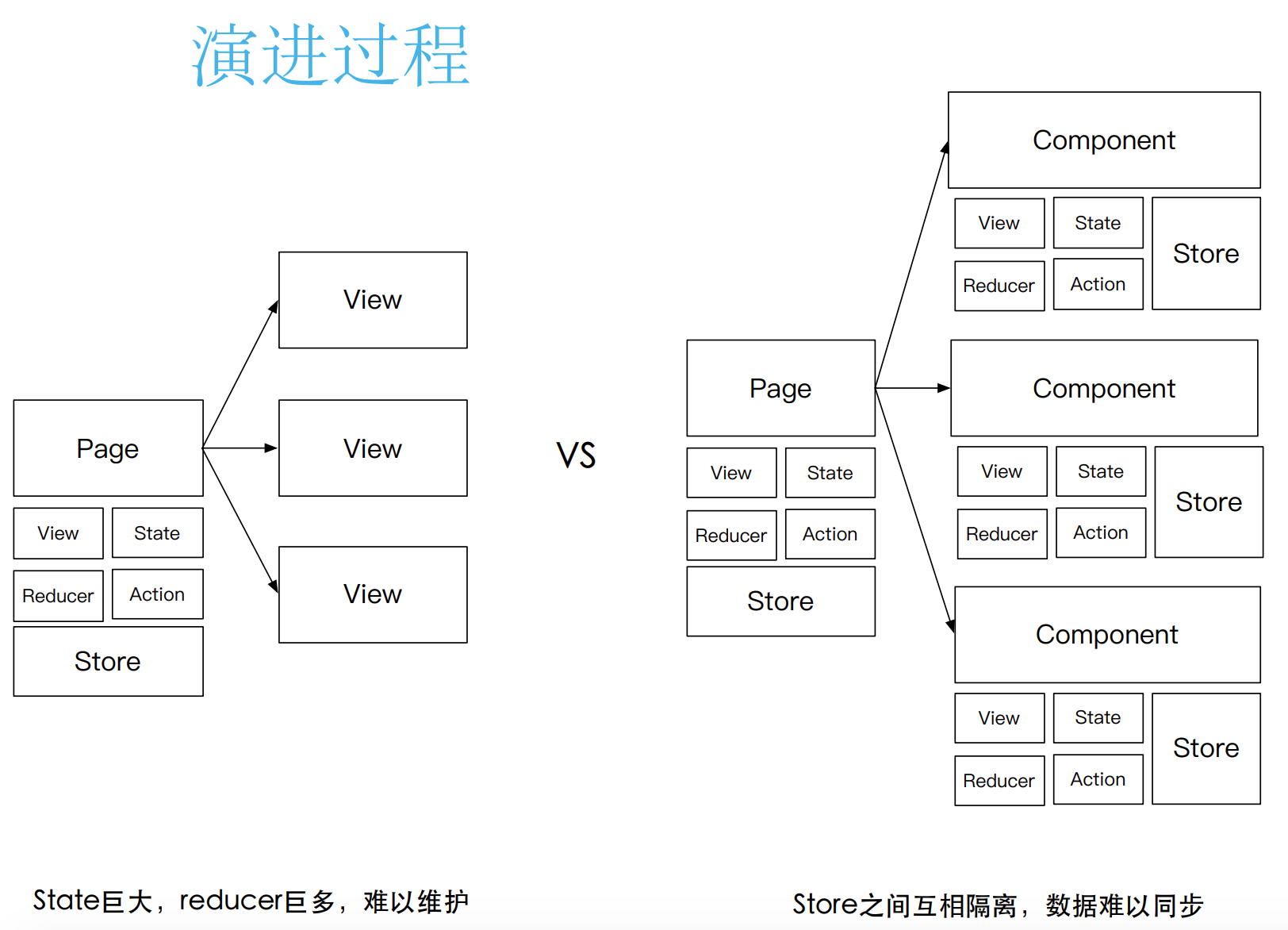
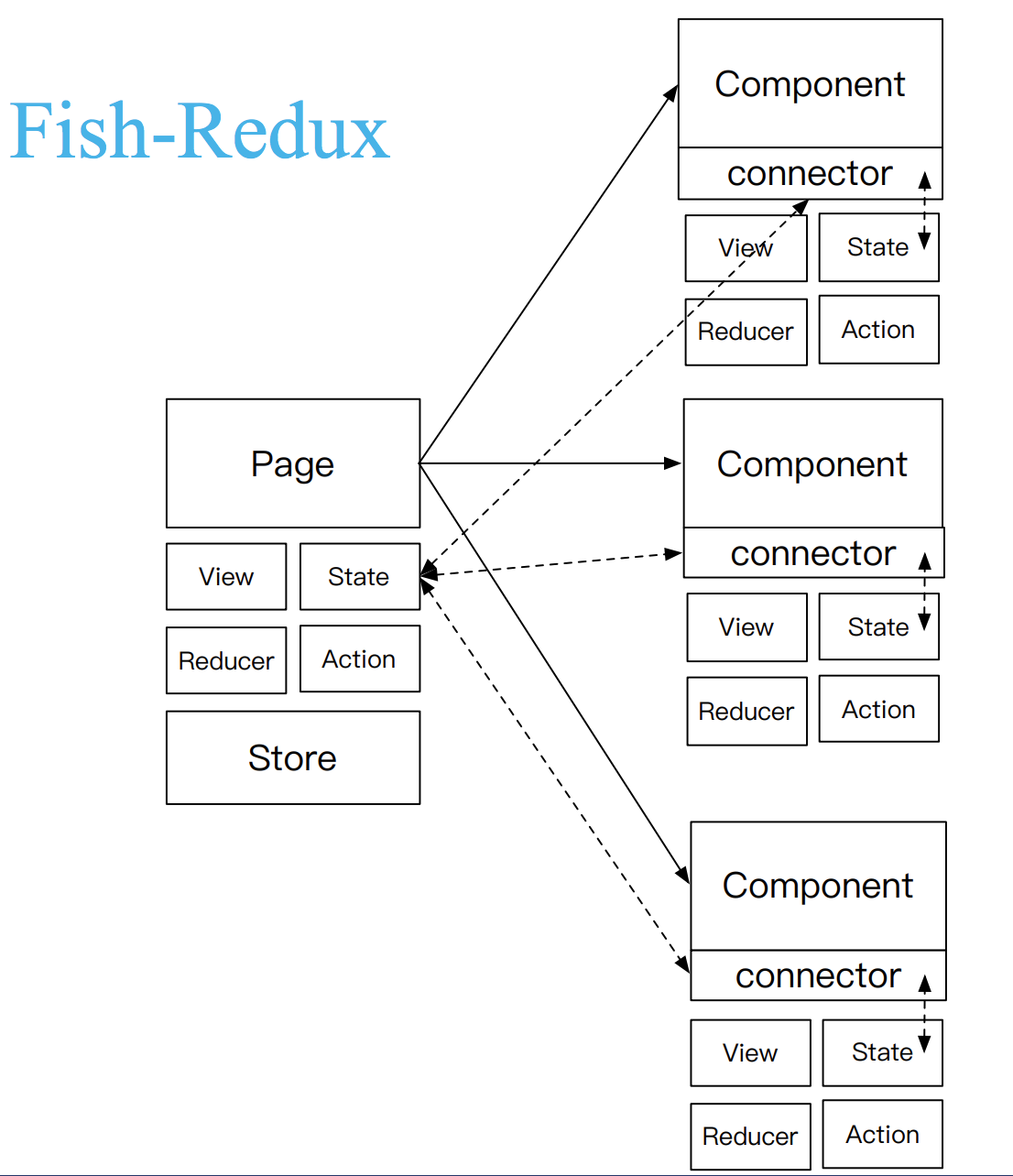
concept
| object | Explain | Subordinate Library |
|---|---|---|
| Action | Represents an intent that contains two fields type,payload |
|
| Connector | It expresses how to read small data from a big data, At the same time, how to synchronize the modification of small data to big data, such a data connection relationship |
|
| Reducer | A context free pure function | |
| State | State value | |
| Middleware | Middleware, injecting logic in AOP aspect oriented form | |
| Component | Encapsulation of view presentation and logic functions | |
| Effect | Dealing with side effects of Action | |
| Dependent | Express how the widget | small adapter is connected to the large Component | |
| Page | Inherit Component, for page level abstraction, build a Store (sub Component share) |
Use
Source official Todos
-
Entry route configuration
///Create application's root Widget ///1. Create a simple route and register the page ///2. Connect the required page to the app store ///3. Enhance the AOP of the required pages Widget createApp() { final AbstractRoutes routes = PageRoutes( pages: <String, Page<Object, dynamic>>{ ///Register TodoList main page 'todo_list': ToDoListPage(), }, visitor: (String path, Page<Object, dynamic> page) { ///Only a specific range of pages need to establish a connection with the app store ///Meet page < T >, t is a subclass of GlobalBaseState if (page.isTypeof<GlobalBaseState>()) { ///Establish one-way data connection of app store driving PageStore ///1. Parameter 1 AppStore ///2. Parameter 2 how to change PageStore.state when the AppStore.state changes page.connectExtraStore<GlobalState>(GlobalStore.store, (Object pagestate, GlobalState appState) { ///Change pagestate according to appState return pagestate; }); } /// AOP ///Pages can have some private AOP enhancements, but often there will be some AOP for the entire application, all pages will have. ///These common AOP s are added by traversing the routing page. page.enhancer.append( ... /// Store AOP middleware: <Middleware<dynamic>>[ logMiddleware<dynamic>(tag: page.runtimeType.toString()), ], ); }, ); return MaterialApp( title: 'Fluro', home: routes.buildPage('todo_list', null), onGenerateRoute: (RouteSettings settings) { return MaterialPageRoute<Object>(builder: (BuildContext context) { return routes.buildPage(settings.name, settings.arguments); }); }, ); } -
New Page
class ToDoListPage extends Page<PageState, Map<String, dynamic>> {
ToDoListPage()
: super(
initState: initState,
effect: buildEffect(),
reducer: buildReducer(),
view: buildView,
);
}
- Define state
class PageState extends MutableSource
implements GlobalBaseState, Cloneable<PageState> {
List<ToDoState> toDos;
@override
Color themeColor;
@override
PageState clone() {
return PageState()
..toDos = toDos
..themeColor = themeColor;
}
@override
Object getItemData(int index) => toDos[index];
@override
String getItemType(int index) => 'toDo';
@override
int get itemCount => toDos?.length ?? 0;
@override
void setItemData(int index, Object data) => toDos[index] = data;
}
PageState initState(Map<String, dynamic> args) {
//just demo, do nothing here...
return PageState();
}
- Define Action
enum PageAction { initToDos, onAdd }
class PageActionCreator {
static Action initToDosAction(List<ToDoState> toDos) {
return Action(PageAction.initToDos, payload: toDos);
}
static Action onAddAction() {
return const Action(PageAction.onAdd);
}
}
- Define Reducer
Reducer<PageState> buildReducer() {
return asReducer(
<Object, Reducer<PageState>>{PageAction.initToDos: _initToDosReducer},
);
}
PageState _initToDosReducer(PageState state, Action action) {
final List<ToDoState> toDos = action.payload ?? <ToDoState>[];
final PageState newState = state.clone();
newState.toDos = toDos;
return newState;
}
- Define Effect
Effect<PageState> buildEffect() {
return combineEffects(<Object, Effect<PageState>>{
Lifecycle.initState: _init,
PageAction.onAdd: _onAdd,
});
}
void _init(Action action, Context<PageState> ctx) {
final List<ToDoState> initToDos = <ToDoState>[];
///Can be used for network / IO and other time-consuming operations
ctx.dispatch(PageActionCreator.initToDosAction(initToDos));
}
void _onAdd(Action action, Context<PageState> ctx) {
Navigator.of(ctx.context)
.pushNamed('todo_edit', arguments: null)
.then((dynamic toDo) {
if (toDo != null &&
(toDo.title?.isNotEmpty == true || toDo.desc?.isNotEmpty == true)) {
ctx.dispatch(list_action.ToDoListActionCreator.add(toDo));
}
});
}
- Define View view
Widget buildView(PageState state, Dispatch dispatch, ViewService viewService) {
return Scaffold(
appBar: AppBar(
backgroundColor: state.themeColor, ///Get state status
title: const Text('ToDoList'),
),
body: Container(
child: Column(
children: <Widget>[
],
),
),
floatingActionButton: FloatingActionButton(
onPressed: () => dispatch(PageActionCreator.onAddAction()), ///Send out intention to change state
tooltip: 'Add',
child: const Icon(Icons.add),
),
);
}
Assemble subcomponent
- Define state
class ReportState implements Cloneable<ReportState> {
int total;
int done;
ReportState({this.total = 0, this.done = 0});
@override
ReportState clone() {
return ReportState()
..total = total
..done = done;
}
}
- Define Component
class ReportComponent extends Component<ReportState> {
ReportComponent()
: super(
view: buildView,
);
}
- Definition view
Widget buildView(
ReportState state,
Dispatch dispatch,
ViewService viewService,
) {
return Container(
margin: const EdgeInsets.all(8.0),
padding: const EdgeInsets.all(8.0),
color: Colors.blue,
child: Row(
children: <Widget>[
Container(
child: const Icon(Icons.report),
margin: const EdgeInsets.only(right: 8.0),
),
Text(
'Total ${state.total} tasks, ${state.done} done.',
style: const TextStyle(fontSize: 18.0, color: Colors.white),
)
],
));
}
- Define Connector to connect parent-child Component
class ReportConnector extends ConnOp<PageState, ReportState>
with ReselectMixin<PageState, ReportState> {
@override
ReportState computed(PageState state) {
return ReportState()
..done = state.toDos.where((ToDoState tds) => tds.isDone).length
..total = state.toDos.length;
}
@override
void set(PageState state, ReportState subState) {
throw Exception('Unexcepted to set PageState from ReportState');
}
}
- The page is used in page, and the modified page is as follows
class ToDoListPage extends Page<PageState, Map<String, dynamic>> {
ToDoListPage()
: super(
initState: initState,
effect: buildEffect(),
reducer: buildReducer(),
view: buildView,
dependencies: Dependencies<PageState>(
slots: <String, Dependent<PageState>>{
'report': ReportConnector() + ReportComponent()
}),
);
}
- The buildView transformation of page is as follows
Widget buildView(PageState state, Dispatch dispatch, ViewService viewService) {
final ListAdapter adapter = viewService.buildAdapter();
return Scaffold(
appBar: AppBar(
backgroundColor: state.themeColor,
title: const Text('ToDoList'),
),
body: Container(
child: Column(
children: <Widget>[
viewService.buildComponent('report'), ///Load subcomponent
],
),
),
floatingActionButton: FloatingActionButton(
onPressed: () => dispatch(PageActionCreator.onAddAction()),
tooltip: 'Add',
child: const Icon(Icons.add),
),
);
}
Key objects
Middleware
StoreMiddleware is actually to strengthen the dispatch function of the Store
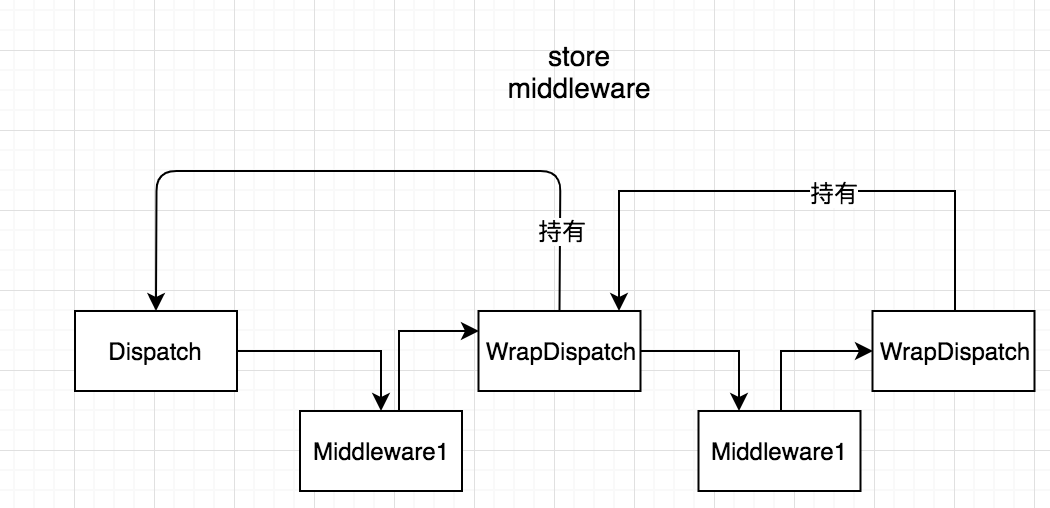
/// fish-redux-master/lib/src/redux/apply_middleware.dart
StoreEnhancer<T> applyMiddleware<T>(List<Middleware<T>> middleware) {
return middleware == null || middleware.isEmpty
? null
: (StoreCreator<T> creator) => (T initState, Reducer<T> reducer) {
final Store<T> store = creator(initState, reducer);
final Dispatch initialValue = store.dispatch; ///Original dispatch
store.dispatch = middleware
.map((Middleware<T> middleware) => middleware( ///Execute the outermost function of middleware to return composable < T >, which is used here to wrap the dispatch
dispatch: (Action action) => store.dispatch(action),
getState: store.getState,
))
.fold(
initialValue,
(Dispatch previousValue,
Dispatch Function(Dispatch) element) =>
element(previousValue), ///Each time the previous dispatch is passed in, a new dispatch is returned. With the closure, the new dispatch holds the reference of the previous dispatch
);
return store;
};
}
An example of Middleware is as follows:
Middleware<T> logMiddleware<T>({
String tag = 'redux',
String Function(T) monitor,
}) {
return ({Dispatch dispatch, Get<T> getState}) {
return (Dispatch next) { ///This method is the element of the fold method in the previous schematic code segment
return isDebug()
? (Action action) { ///Return the packaged Dispatch
print('---------- [$tag] ----------');
print('[$tag] ${action.type} ${action.payload}');
final T prevState = getState();
if (monitor != null) {
print('[$tag] prev-state: ${monitor(prevState)}');
}
next(action);
final T nextState = getState();
if (monitor != null) {
print('[$tag] next-state: ${monitor(nextState)}');
}
}
: next;
};
};
}
Global Store
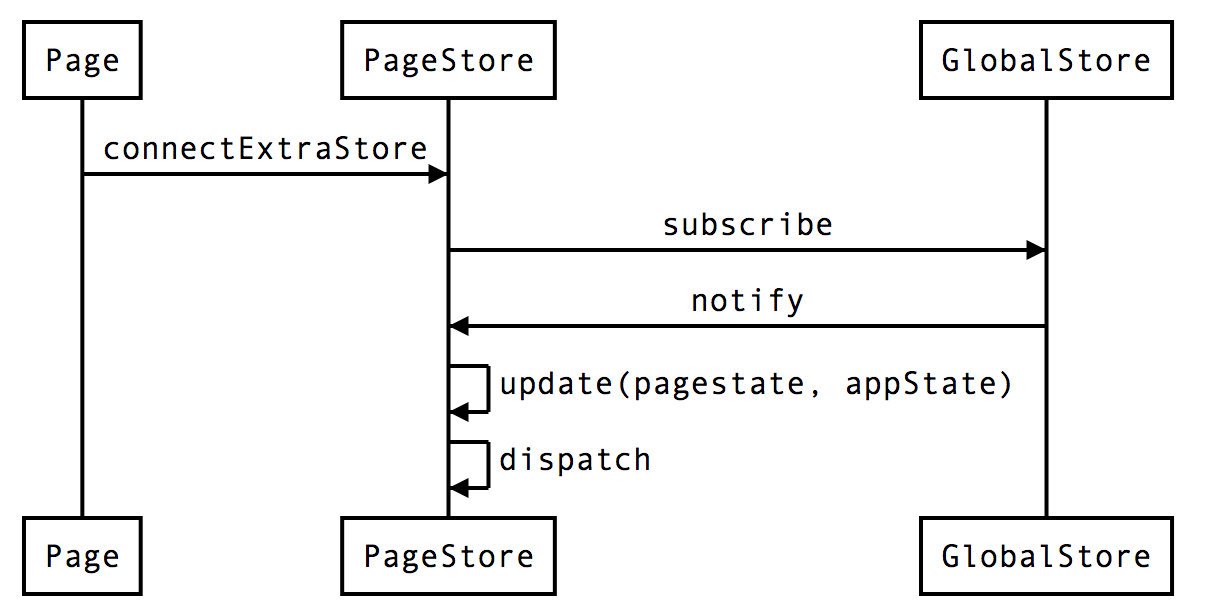
page.connectExtraStore<GlobalState>(GlobalStore.store,
(Object pagestate, GlobalState appState) {
final GlobalBaseState p = pagestate;
if (p.themeColor != appState.themeColor) {
if (pagestate is Cloneable) {
final Object copy = pagestate.clone();
final GlobalBaseState newState = copy;
newState.themeColor = appState.themeColor;
return newState;
}
}
return pagestate;
});
Connector
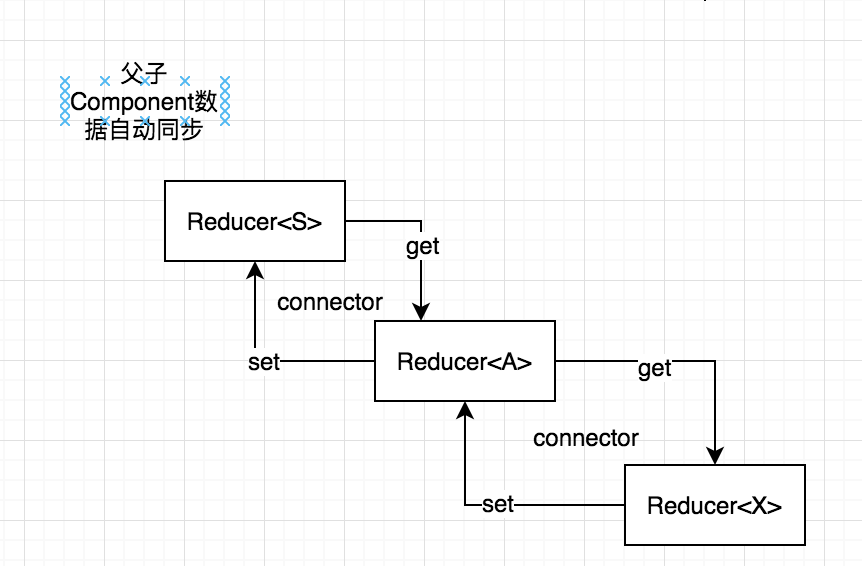
abstract class MutableConn<T, P> implements AbstractConnector<T, P> {
const MutableConn();
void set(T state, P subState);
@override
SubReducer<T> subReducer(Reducer<P> reducer) {
///Package the reducer of this Component into a new reducer to inject into the parent store
return (T state, Action action, bool isStateCopied) {
final P props = get(state);
if (props == null) {
return state;
}
final P newProps = reducer(props, action); ///Call the reducer of this Component to return the state of the child
final bool hasChanged = newProps != props;
final T copy = (hasChanged && !isStateCopied) ? _clone<T>(state) : state;
if (hasChanged) {
set(copy, newProps); ///Notify parent Component synchronization status
}
return copy;
};
}
}
See the official document for the rest: https://github.com/alibaba/fish-redux/blob/master/doc/README-cn.md
summary
Advantage:
- Each Page has a Store, and its sub components share its Store. A single Component still has the features of redux to achieve divide and conquer
- Automatically merge the reducer s of the child and synchronize the data with the store of the page
- Use event bus to establish the connection between pages, and use broadcast effect to distribute the actions that page itself does not care about to other pages
- You can share the state globally, and define a global Store associated with page.connectExtraStore
Disadvantages:
- More concepts, higher learning curve
- There are many objects and files to be defined
- It is easy to introduce unnecessary complexity if the scale of the project is not well grasped
- Code structure is more intrusive
To be continued
There are a lot of concepts defined in the fish Redux framework, which need to be further developed

